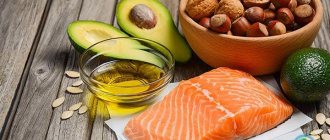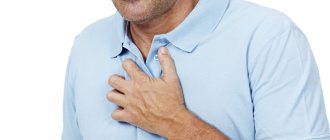The symptom complex of vegetative-vascular dystonia includes many manifestations that affect the functioning of almost all organs. Extrasystole with VSD is a very common symptom and accompanies almost every VSD patient. It is exclusively neurological in nature and in most cases does not threaten the patient’s life, but it brings a lot of inconvenience and leads to an exacerbation of the disease.
What is characteristic of vegetative-vascular dystonia
It is important for a VSD patient to understand that his arrhythmia is of a functional nature. And no matter where exactly and in what quantity it occurs, one thing is clear: the heart is healthy, and the reason lies in something completely different.
Extrasystole in such patients manifests itself when a large amount of adrenaline enters the blood. But as soon as it decreases to normal, all sensations subside. That is, the problem is temporary and reversible. But patients tolerate it very hard. For them, this is like death: heart failures catch them suddenly, they can be repeated for several months and even years, until the cause is eliminated.
At this moment, a person is seized by a feeling of fear. He begins to choke, his legs give way, and he may lose consciousness. The patient becomes pale, begins to rush about, and scream. The sensation in the chest resembles a blow to the rib cage.
An even greater fear is the compensatory break after an extraordinary compression. The patient fears that his heart will stop. It seems to him that he will die, and this cannot be avoided.
If the excitement intensifies, then the symptoms worsen. Atrial fibrillation occurs. It seems that the heart works outside the regime, chaotically, as it pleases. Fortunately, this condition rarely occurs.
Kinds
Depending on the predominant syndrome (complex of symptoms), vegetative-vascular dystonia is divided into the following types:
- hypertensive: accompanied by a short-term increase in blood pressure (within 140 mmHg), headache, rapid heartbeat;
- hypotonic: blood pressure is constantly low or decreases sporadically, which is often accompanied by severe dizziness, darkening of the eyes or fainting; patients also complain of excessive fatigue, frequent headaches and a feeling of aches throughout the body;
- cardiac: manifests itself as an increased, decreased or uneven pulse, chest pain, as well as attacks of shortness of breath, in which the patient experiences a strong feeling of lack of air;
- vagotonic: a person, first of all, complains of breathing problems: the inability to take a full breath, a feeling of tightness in the chest; the condition is accompanied by strong salivation;
- mixed: a combination of different symptoms or their alternation.
Depending on the severity, there are three types of VSD:
- mild: a person experiences symptoms rarely, they do not disrupt his lifestyle or reduce his ability to work; there are no crises;
- moderate severity: symptoms are clearly expressed and interfere with normal life activities; periodically a person may experience crises during which his ability to work decreases;
- severe: manifestations of the disease are observed almost constantly, the person cannot work normally, and is often on sick leave; vegetative crises are repeated very often.
Why do extrasystoles occur during VSD?
Cardiac “dancing” in vegetative-vascular dystonia can occur when both parts of the autonomic nervous system are disrupted.
If the sympathetic department fails, extrasystoles appear after physical exertion. They are poorly controlled by sedatives, and may even intensify after taking them.
If the functioning of the parasympathetic system is disrupted, in addition to cardiac symptoms, digestive disorders are of concern: epigastric pain, diarrhea, bloating. A cup of coffee or sweet tea or a brisk walk will help relieve such an attack.
If the cause is psychological, treatment measures are directed in the other direction.
Most often, dystonics are bothered by two types of extrasystole:
- Ventricular. Usually makes itself felt in the first half of the day. It is caused by disturbances in mental balance, for example, great joy or grief. It also appears when the weather changes or when drinking strong drinks. Other provoking factors include magnesium and calcium deficiency, osteochondrosis. It all starts with an intense beat in the heart area, followed by a pause. The patient becomes covered in cold, sticky sweat and develops a feeling of fear. Despair sets in, he cannot choose a comfortable position for himself, becomes numb or begins to fuss. The violence of his heart leads him into an uncontrollable state, causing him a lot of suffering.
- Supraventricular. The most common type of arrhythmia in VSD. The causes of this condition coincide with those of the ventricular form. In addition, dystonics who are addicted to antiarrhythmic and diuretic drugs are at risk. Patients claim that the condition worsens when lying down. It is this sign that indicates that the cardiac failure is functional in nature.
general information
The term “vegetative-vascular dystonia” is currently not included in the International Classification of Diseases. Instead, the diagnosis “somatoform autonomic dysfunction of the nervous system” is used. In addition, a number of individual manifestations are classified as independent diseases. In our country, the old terminology is more often used.
The autonomic nervous system (ANS) is responsible for regulating the basic processes occurring inside the human body. Vital functions are under its control:
- breath;
- heart rate;
- tone of blood vessels and hollow organs;
- secretion of saliva, sweat, hormones;
- digestion of food;
- liver and kidney function, etc.
A person cannot control the functioning of the autonomic nervous system, which is why it is also called the autonomic nervous system. The functioning of various departments is regulated by a complex feedback system and also depends on the level of hormones. Failures in this mechanism lead to disruptions in the functioning of internal organs.
Make an appointment
Extrasystole and other signs of VSD
Considering that extrasystoles cause severe discomfort to dystonics and knock them out of their normal state, they become the cause of the development of other symptoms of VSD. These include:
- increased sweating;
- irritation;
- worry and anxiety;
- weakness and malaise;
- chills and feeling of heat.
Panic attacks that occur during heart dances become the basis for the formation of cardioneurosis. A dystonic person risks developing a phobia against the background of such interruptions in the heart.
Attacks of arrhythmia that occur at night disturb the sleep of the sufferer and provoke insomnia. It can also accompany him as a result of constant worry and anxiety.
Extrasystoles in neurocirculatory dystonia, despite their harmlessness, cause circulatory disorders, including cerebral circulation. As a result, the patient experiences attacks of suffocation, lack of air, and dizziness. Shortness of breath appears.
One of the complications provoked by extraordinary heart contractions during VSD is a panic attack. It begins with an attack of panic and fear, accompanied by a feeling of anxiety and tension. Other symptoms include tachycardia, internal trembling and sweating, nausea, suffocation and dizziness. Characterized by unpleasant sensations in the heart area, tingling and numbness of the arms and legs. The panicker is overcome by fear of death, consciousness is confused, and thinking is impaired.
Thus, arrhythmia, being a sign of VSD, provokes the development of other symptoms of the disease and aggravates its course.
Causes
Malfunctions of the ANS can be caused by various diseases and conditions. The list of the most common causes of vegetative-vascular dystonia includes:
- endocrine diseases (diabetes mellitus, hypo- or hyperfunction of the thyroid gland, etc.);
- significant hormonal changes in the body (during puberty, menopause or pregnancy);
- injuries to the brain or spinal cord (even one mild concussion can be enough to develop disruptions in the functioning of the nervous system);
- osteochondrosis of the cervical spine;
- encephalopathy of various origins;
- chronic diseases of the cardiovascular system, gastrointestinal tract;
- physical or mental fatigue;
- chronic lack of sleep;
- one-time severe stress or chronic tension of the nervous system;
- alcohol or drug abuse, smoking;
- mental illness;
- increased anxiety, hypochondria;
- use of certain medications (oral contraceptives, bronchodilators, medications based on caffeine and ephedrine);
- acute and chronic infections of the brain, kidneys, respiratory system;
- hereditary predisposition.
Changes in climate or time zones, and frequent business trips can also provoke the manifestation of VSD. Statistics show that women suffer from the disease three times more often than men. Adolescents are also at risk.
Diagnostics
Diagnosis of vegetative-vascular dystonia requires, first of all, the exclusion of another, more serious pathology with similar symptoms. The examination includes:
- interviewing the patient, collecting anamnesis to identify specific complaints, their strength, circumstances of occurrence, etc.; hereditary factors and previous diseases are also taken into account;
- examination: breathing and pulse rates are checked, an orthostatic test is performed (measurement of the heart rate first while lying down, and then 1-2 minutes after moving to a vertical position), dermographism is assessed (the color of the strip on the skin after holding the handle of a neurological hammer, indicating the activity of the or another part of the autonomic nervous system);
- laboratory diagnostics: general and biochemical blood tests, assessment of hormone levels, indicators of inflammation and autoimmune processes);
- ECG and ultrasound of the heart to exclude cardiac pathology;
- chest X-ray and respiratory function testing (spirometry), to exclude diseases of the respiratory system;
- rheoencephalography: assessment of the tone of cerebral vessels, the elasticity of their walls;
- Doppler ultrasound of the vessels of the neck and brain to assess the quality of blood flow in them;
- X-ray of the sella turcica, MRI of the brain to exclude tumors and other pathologies;
- electroencephalography (EEG): evaluates bioelectrical impulses in the brain and helps exclude epilepsy.
The patient must be examined by a therapist, neurologist and cardiologist. If necessary, consultations with other specialists are added, for example, a gynecologist, gastroenterologist, endocrinologist, psychiatrist.
Make an appointment
Treatment
Treatment of vegetative-vascular dystonia requires an integrated approach. The doctor is required to minimize the number of attacks, reduce their strength and duration. A combination of several techniques is used:
- drug treatment;
- acupuncture, as the most effective for stabilizing the autonomic nervous system
- physiotherapy, exercise therapy, massage;
- Spa treatment;
- psychotherapy if necessary.
Drug treatment is aimed at stabilizing the functioning of the autonomic nervous system, improving blood circulation and metabolism. Depending on the clinical situation, the following may be prescribed:
- sedatives of varying strength from herbal to prescription: improve the quality of night's rest, reduce stress and anxiety;
- antidepressants: help eliminate excessive anxiety, irritability, apathy; help stabilize the heart, reduce headaches and muscle pain;
- tranquilizers: necessary for severe panic attacks, unreasonable fears, high anxiety;
- nootropic drugs: improve metabolism and blood circulation in neurons of the brain and spinal cord, increase resistance to stress;
- adrenergic blockers and other antihypertensive drugs: used symptomatically for increased blood pressure and rapid pulse;
- B vitamins: improve the conduction of nerve impulses and have a beneficial effect on the state of the nervous system.
Physiotherapeutic techniques help improve blood circulation and oxygen supply to tissues. Some procedures, on the contrary, have a relaxing effect and increase resistance to stress. The patient is prescribed:
- laser therapy;
- magnetic therapy;
- electrophoresis;
- electrosleep, etc.
If necessary, drug treatment and physiotherapy are supplemented with a general strengthening complex of physical therapy, massage, and acupuncture. Psychotherapy is aimed at reducing general anxiety, stabilizing the condition, and working through internal blocks and fears.
Sanatorium-resort treatment is used outside the period of exacerbation. Patients are prescribed general restorative procedures: mud therapy, mineral water baths, etc. It is necessary to choose resorts in a similar climatic zone so that the trip does not cause an exacerbation of the condition.
Prevention
Timely detection, treatment and consistent prevention lead to the disappearance or significant reduction of the main manifestations of vegetative-vascular dystonia (in 80-90% of cases). A full range of measures allows you to restore the body’s adaptive capabilities. A significant role in this is played by lifestyle correction, which includes normalizing the work regime, eliminating physical inactivity, providing daily dosed physical activity, limiting excessive emotional influences, and proper nutrition. An integral component of the prevention of vegetative-vascular dystonia is rest. It is extremely important to travel outside the city regularly. The best option would be to undergo treatment in a sanatorium, a stay in which not only allows you to fully relax from constant physical and psycho-emotional stress, but also provides the opportunity to undergo special procedures in one place.
If you are looking for a way to effectively treat and prevent VSD or want to undergo a comprehensive examination, contact the ABC-Medicine clinic. To contact specialists, dial our Moscow number +7.
Advantages of the clinic
The Health Energy Clinic offers each patient the highest quality medical services at an affordable price. By contacting us, you will receive:
- consultations with experienced doctors of various profiles;
- full diagnostics to identify obvious and hidden pathologies;
- a modern and effective complex treatment scheme, selected in accordance with the characteristics of your body.
Our clinic has its own day hospital, where you can undergo various therapeutic and diagnostic procedures in accordance with the doctor’s prescription. Convenient parking and location next to the metro allows you to get to us with maximum comfort.
Vegetative-vascular dystonia can be a serious problem that interferes with a full life. Do not submit to the disease, sign up for the Energy of Health clinic.
Treatment at the Energy of Health clinic
Doctors at the Health Energy clinic choose an integrated approach to the treatment of vegetative-vascular dystonia. After a thorough diagnosis and exclusion of other pathologies, combination therapy will be prescribed, including:
- modern medications if necessary (the choice depends on the severity of symptoms);
- physiotherapy, massage and physical therapy to strengthen the body in general and the nervous system in particular;
- acupuncture, manual therapy if indicated.
We will certainly discuss your lifestyle, tell you about ways to correct it, and help you create the right diet. Regular monitoring by our doctors will help keep the disease under control.









